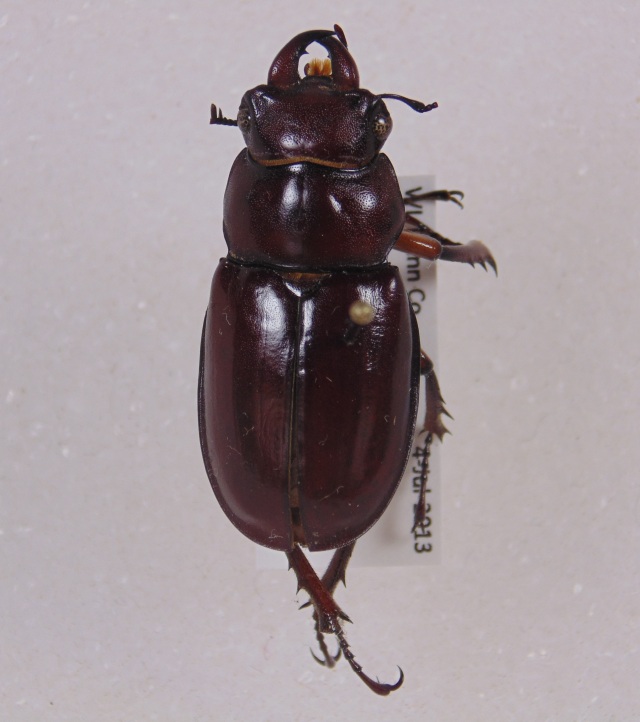Another of the stag beetle species found in the U.S. It’s around the same size as Lucanus capreolus but lacks the bicolored femurs and has multiple teeth on the mandibles instead of one like in L. capreolus.
This species can be found in the midwestern states from southern Canada down to Texas. I collected the single specimen I have in northwestern Wisconsin in the same general area where I also collected L. capreolus.
Like other stag beetles adults can be found at lights at night and larvae can be found in decaying logs and stumps.



